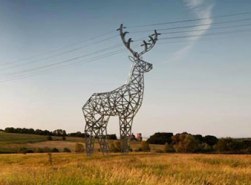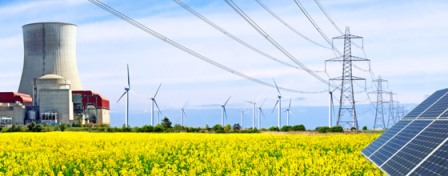Categories: Featured Articles » Interesting Facts
Number of views: 13383
Comments on the article: 1
Electricity and the environment
 The life of a modern person, especially a city dweller, is inconceivable without electric energy. It is necessary to temporarily stop the supply of electricity, and the supply of gas, water to the apartments stops, the heating does not work. In the dark, cold and without water, a modern resident becomes completely helpless.
The life of a modern person, especially a city dweller, is inconceivable without electric energy. It is necessary to temporarily stop the supply of electricity, and the supply of gas, water to the apartments stops, the heating does not work. In the dark, cold and without water, a modern resident becomes completely helpless.
Electric energy consumption is constantly growing, and its production is increasing. The consequence is a large load on the environment, its environmental pollution. Therefore, the rational consumption of electric energy is the most important technical and organizational task.
Electricity is the most perishable product in the world - if it is not consumed by loads, then after a moment many tons of coal, fuel oil, thousands of cubic meters of gas will disappear without a trace and useless. The coordination of the amount of generated and consumed energy is solved in several ways. The first of them has been implemented for a long time: extended power systems are being created, covering several time zones and including power plants of various types: nuclear, thermal and hydroelectric power stations.
Such a combination allows you to even out energy consumption during the day and more efficiently use fuel at the generating stations. But you have to pay for such a decision by the need to transfer electric energy over distances of thousands of kilometers. At the same time, energy losses during transportation increase sharply.
Attempts to increase voltage levels during energy transmission over long distances encounter physical limitations associated with corona breakdown of air. The cost of power lines with a voltage of more than a million volts increases sharply.
Hopes for use were not realized superconducting lines to transmit electricity. The lack of heat in superconductors theoretically allows the transfer of huge power to an unlimited distance. But here, too, physics has put a barrier to the introduction of superconductors in technology. Metals and alloys go into a state with zero resistance at temperatures close to absolute zero. The alloy of niobium and tin has a superconducting transition temperature of just over 20 degrees Kelvin.
Despite the complexity of power lines operating at cryogenic temperatures, one could go for their creation. Moreover, in recent decades, superconducting materials have been discovered that operate at higher temperatures, up to room temperature. But when the current flows, a magnetic field arises, which, upon reaching a certain critical value, destroys superconductivity. Therefore, things did not go further than laboratory research and the creation of electrophysical installations.
Very high hopes were placed on the creation of power plants with fusion reactors. In the early sixties of the last century, it seemed that several technical problems remained to be overcome, and humanity would gain access to an unlimited ocean of energy. Research continues to this day, pilot industrial reactors are being built, but it is still a long way to get electrical energy through fusion.
And non-renewable fuel is inexorably exhausted. Oil and gas reserves will be enough for about half a century, coal - for 300-400 years. The burning of hydrocarbon fuels has already disrupted the global heat balance on our planet. By the time of exhaustion of non-renewable resources, the environmental impact will reach such proportions that the very existence of mankind will become doubtful.
Therefore, at present, the main efforts (financial, intellectual) must be directed to the use of renewable resources (alternative energy sources): wind energy, tidal waves, the use of Earth's heat. While the electric energy generated using these resources occupies an insignificant part in the total volume and is noticeably more expensive than usual. But we have no other options: either we will master renewable energy sources, or we will perish.
See also at bgv.electricianexp.com
:

